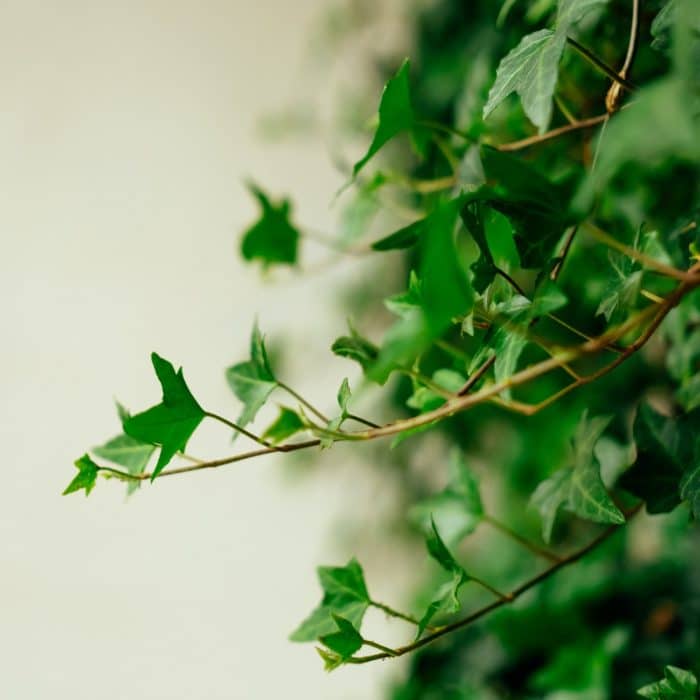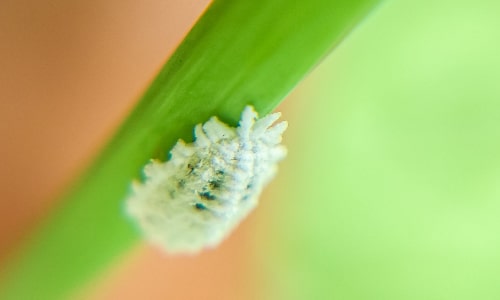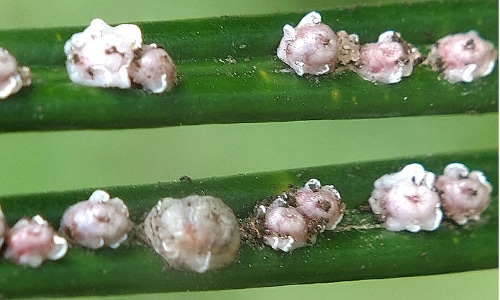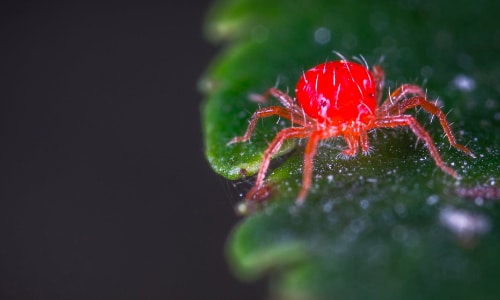There are over 500 cultivars of hedera helix with colors varying between green, white, and yellow (and the occasional additional color). Leaves vary in shape, size, and number of lobes. With so much variety, you’ll have no problem finding the perfect English ivy for your home.
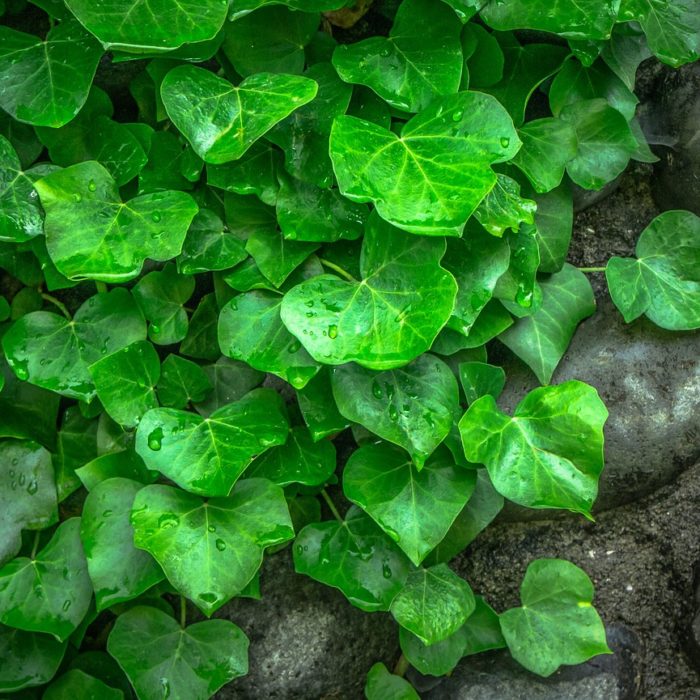
English Ivy
| Class | Info |
|---|---|
| Common Name | English Ivy, European Ivy, Common Ivy |
| Scientific Name: | Hedera helix |
| Family | Ginseng |
| Plant Type | Vine |
| Origin | Europe, Western Asia, North Africa |
| Habitat | Hedera helix can be found in almost any habitat. The climbing vine can grow on trees (which slowly destroys the tree) on buildings, cliffs, in fields, along the forest edge, rocky slopes, etc. |
| Note: | English ivy is considered an invasive plant in the United States and Australia. While it doesn’t hurt to grow the plant indoors, we advise not planting it outdoors. |
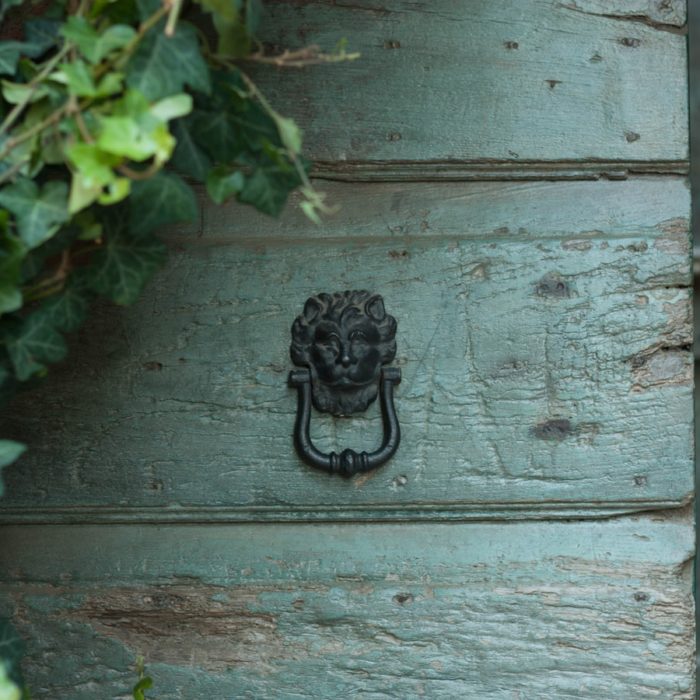
English Ivy Varieties
There are more than 500 hedera helix cultivars on the market, with variations in size, color, and lobe amounts on the leaves.
Here is a list of popular English ivy cultivars:
-
Angel Snow
Angel Snow displays dark green leaves with creamy-yellow edges and streaks.
-
Asterix
Asterix is named for the number and depth of the lobes on its leaves.
-
King’s Choice
King’s Choice is a delicate ivy that flows intricately with long, narrow leaves to give a webbed effect.
-
Purpurea
The leaves of the Purpurea English ivy cultivar has a purplish tint that darkens in the winter.
If you’re in the market for “miniature” hedera helix, look at one of the following varieties:
-
Erecta
The leaves of Erecta are stacked closely along the stem and grow in stalks.
-
Needlepoint
Needlepoint leaves are tiny with sharply-pointed lobes and grow tightly together.
-
Miniature Needlepoint
Miniature Needlepoint, also known as “bird-foot ivy,” has very elongated lobes on its tiny leaves.
-
Oak Leaf
The Oak Leaf cultivar has 3-point leaves are tiny as in the size of your fingernails.
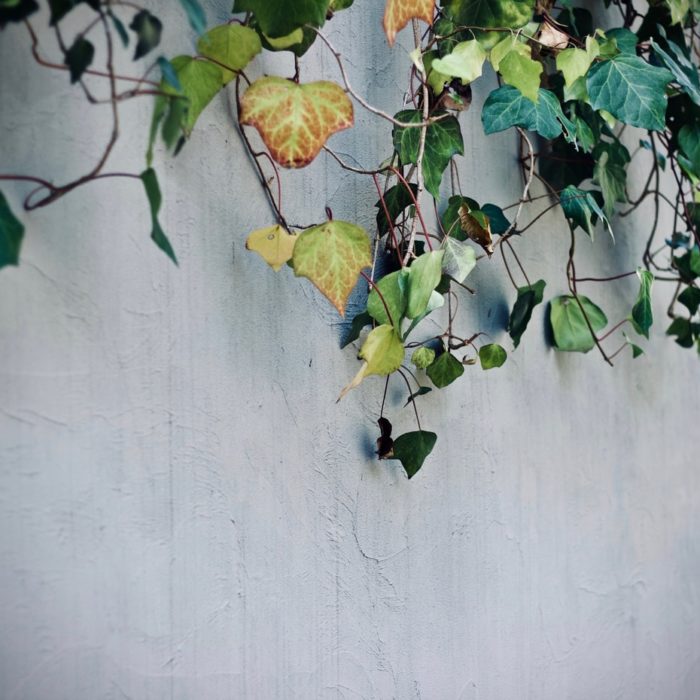
Indoor English Ivy Care Guide
While outdoors, English ivy can easily get out of hand, you don’t have to worry about growing it inside. It can be hung, cascading down from baskets or growing up along branches, poles, or stone-work.
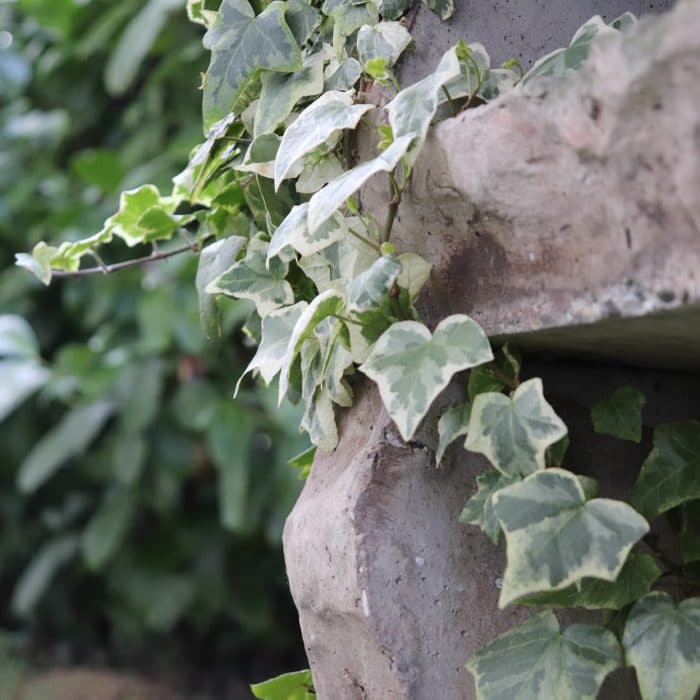
Common Problems with English Ivy
If you’re paying attention to your plant, you’ll likely notice symptoms as they appear and can quickly remedy the situation. Once you’ve diagnosed the problem, you can begin to correct it to return your hedera helix to its glory. Here are a few questions people typically ask if their plant seems stressed.
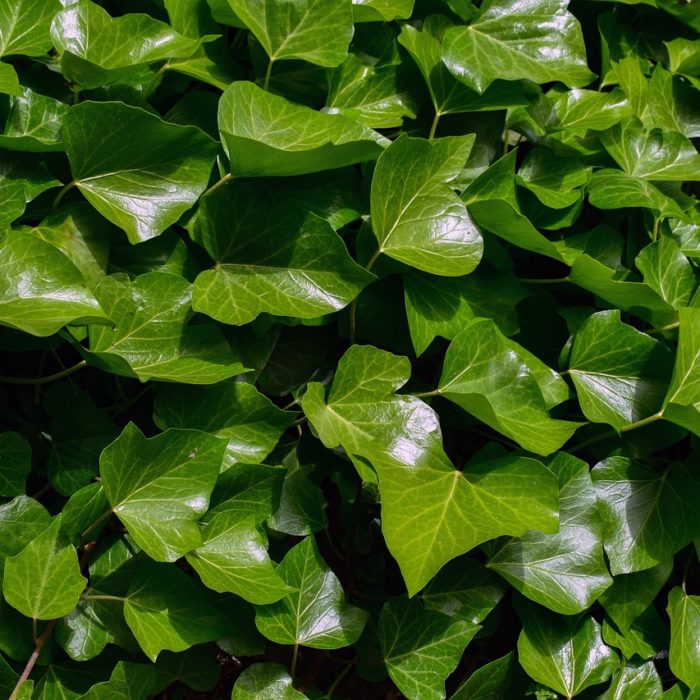
How to Propagate an English Ivy
English ivy can be propagated by gently placing stem cuttings in a pot with a moist potting medium. Roots will begin to grow from the stem.
Alternatively, you can actually pin one of the vines to another pot of soil while it is still attached to the parent plant. If the potting medium is moist, the plant will begin to develop roots. Once the roots have grown enough to be established in the new pot, cut the stem away from the parent to make it independent.
When kept indoors, an English ivy plant can stay in its juvenile state for years, allowing houseplant owners to enjoy their evergreen, glossy leaves. When it reaches adulthood, it will become more bushlike and the leaves will change in size and shape. Cuttings from an adult plant will remain an adult. To keep the juvenile appearance, you must take cuttings from a juvenile plant.
How Does English Ivy Spread?
In the wild, English ivy is spread by seed through bird poop and vegetatively through growth. Plants can be propagated through cuttings that are placed in the soil. It usually propagates naturally from early spring to late autumn.
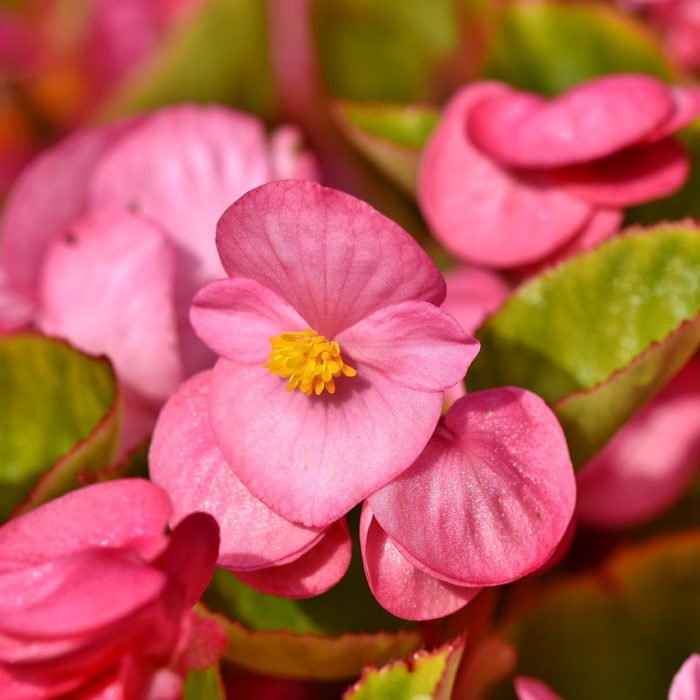
English Ivy Companion Plants
There are several great plants that grow well with the hedera helix and complement each other’s appearance. These include:
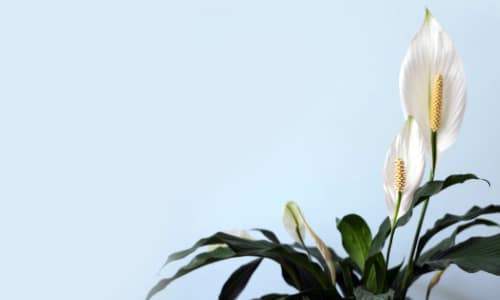
Peace Lily Overview
Peace lilies are known for their long, dark green leaves that come to a point and their long-lasting white flowers. Due to the lily-like flowers, the plant has long symbolized innocence, peace, and purity and is often used as a symbol of sympathy toward a family who has lost a member. Due to its love of shade, the plant is typically grown indoors and can help to purify the air of several pollutants. The plant is sometimes believed to bring good luck.
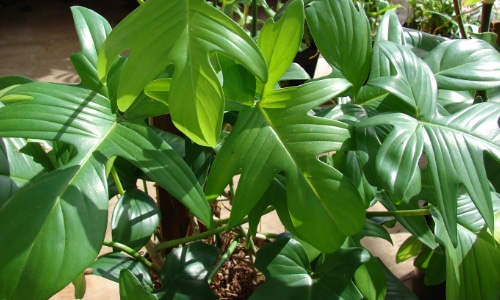
Philodendron Overview
Depending on the variety, a philodendron’s leaves may vary from green, purple, red, or copper. Grown leaves will range from 10-16 inches that are arrow-shaped and have veins that will occasionally contrast with the color of the leaf. Not only are these plants popular in many homes, but they are also said to remove harmful toxins (such as formaldehyde) from the air. The plant will typically grow to be about 3 feet tall, but can be quite wide.
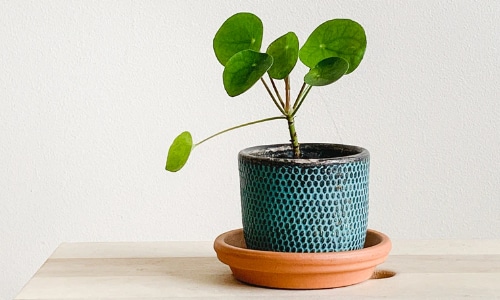
Chinese Money Plant Overview
Originally believed to bring good luck, the Chinese Money Plant originates in Southwest China. It grows flat, round leaves that can look like coins on long stems that grow directly from the crown. When it is healthy, the plant can become very dense, allowing you to have a rounded plant of green leaves. The plant is very easy to propagate and will frequently shoot up pups around its base that you can transplant into other containers.
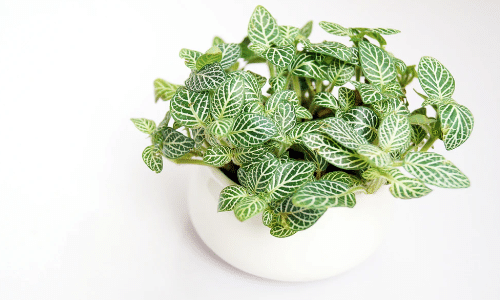
Fittonia Overview
Also known as the Nerve Plant, Fittonias are a popular houseplant with vibrant leaves. They come in several different colors and variegations. While they typically do not grow to be very tall, they do spread out, vining a little bit. They need to have moist soil or the leaves will begin to suffer. The plant has a slight fuzz that covers the stems and the leaves, making it a soft plant to touch.
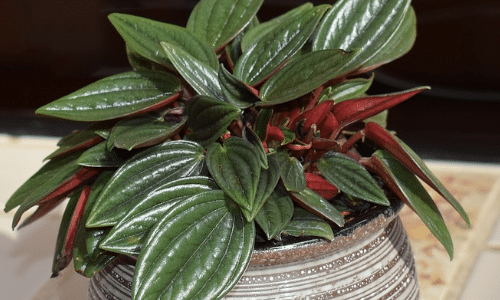
Peperomia Overview
Peperomias are popular houseplants that are very easy to care for. They are bushy and upright. Depending on the variety, the leaves and stems will have slightly different colors and variegations. The plants don’t grow very large, most topping out at about a foot high. The leaves are thick and waxy and can grow to be about 6 inches long, making the plant look full and bright. The flowers of the peperomia are not remarkable but instead, look like small spikes that stand out at the top of the plant.
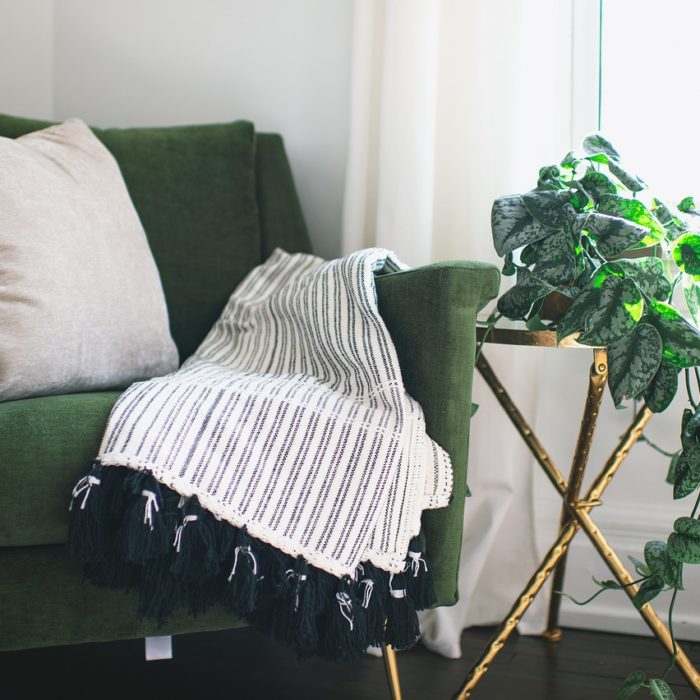
Plants That Are Similar to English Ivy
Here is a list of other plants that are visually similar to hedera helix that might interest you:
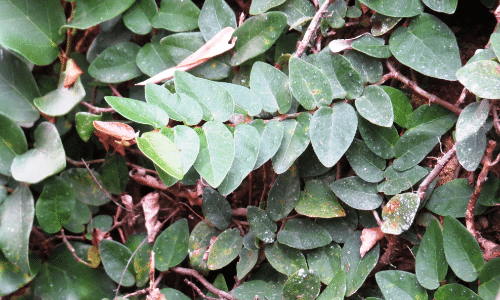
Creeping Fig Overview
Creeping figs are often used as a climbing plant or as a ground cover outdoors. It does well in both full and part shade as long as it is planted in well-draining soil. The plant has aerial rootlets that will grasp onto any surface, allowing it to creep along. The leaves are ovate and heart-shaped and will vary in size depending on the variety. The plant is an easy vine to grow indoors and the leaves will typically remain smaller in those instances. It will die back down to the ground if it is exposed to frost.
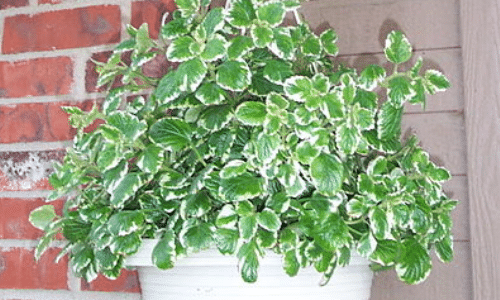
Swedish Ivy Overview
Despite its name, Swedish Ivy (Plectranthus australis) actually hails from South Africa. This evergreen perennial was so named because it gained popularity as a houseplant in Sweden after the discoverer of the plant sent it to the country. The plant will typically grow to between 2 and 3 feet tall and will spread out as they age. The glossy green leaves have crenate margins (scalloped edged) that will have white markings in variegated species. When flowering, the plant will produce light purple or white blooms.
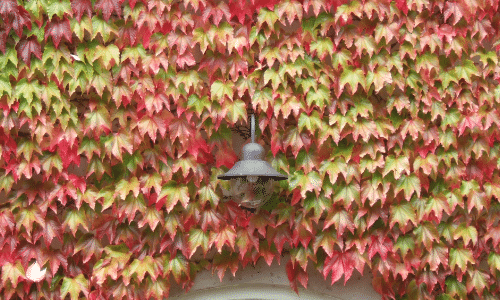
Boston Ivy Overview
Boston Ivy is known for how it quickly and vigorously can climb fences and walls. The deciduous woody vine produces cordate-oval leaves that generally have 3 lobes. They slightly undulate on the margins and grow to be between 4 and 8 inches wide. The leaves can start out as light-green or even reddish but will turn a deep, shiny green as they go into summer. In autumn, they typically look red and can are beautiful against walls and on fences. The vines can grow between 30 and 50 feet high, covering every surface they come across.
Note: Poison ivy (Toxicodendron radicans) is also visually similar to English ivy but is very toxic. It can be identified through three-leaflet compound leaves. It isn’t evergreen and doesn’t have leaves in the winter. It has clusters of fruit that are creamy-white. It can be confused with English ivy due to hairy stems.
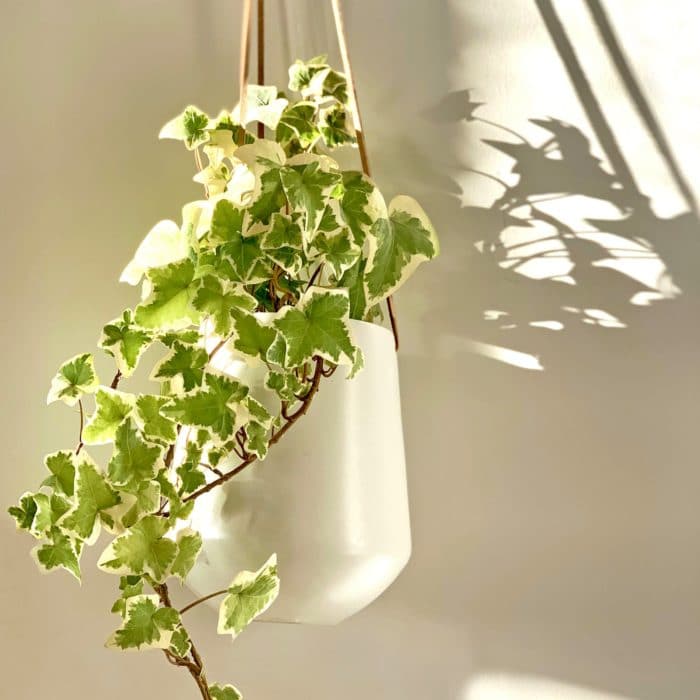
Frequently Asked Questions
Here are a few typical questions that are asked about hedera helix:
-
How Difficult Is It To Grow English Ivy?
English ivy is a very easy plant to grow. It is hardy enough to handle some common mistakes novice gardeners make, especially if they learn to overcome them. They can generally survive in low lights, though they do better in moderate to full light. If you forget to water it for a while, it will generally survive.
Hedera helix is hardy enough that if it is distressed or dying, there is a good chance that there is something wrong with the environment (air too dry, etc). You may want to investigate the cause as treating your ivy might help you as well.
-
Is English Ivy Toxic or Bad for Pets?
English ivy is toxic to humans and pets. Do not ingest the leaves or berries of English ivy. They contain glycoside hederin which is toxic to humans. While not fatal if ingested, people could experience an upset stomach, difficulty breathing, fever, weak muscles, diarrhea, lack of coordination, and other related issues. The sap from an English ivy plant can also lead to severe contact dermatitis (a skin irritation).
If you believe that you or a loved one has ingested part of the plant or has skin irritation, don’t hesitate to take them to the doctor or the vet. You can also call the poison control center:
- Australia – Call 131 126
- Canada – Find your province’s number on this website
- New Zealand – call 0800 POISON (0800 764 766)
- United Kingdon – Call NHS 111
- United States – Call (800) 222-1222
-
What Kind of Pot Do You Need for Your English Ivy?
If you plan to let the ivy “grow wild,” you don’t need to worry too much about the color or design of the pot as the ivy will engulf it.
Make sure that the plant isn’t cramped in the pot, but don’t pick an oversized container either. Re-pot the plant in the spring or fall if possible as it needs it (generally every other year). Go to a slightly larger pot that is 2 inches (5 cm) larger than the last.

